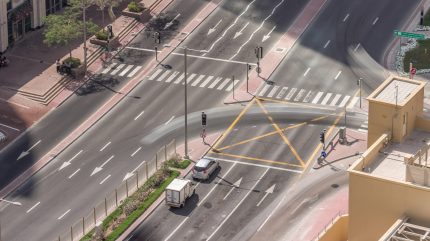
Dubai’s Roads and Transport Authority (RTA) is undertaking the construction of 16.5 km of internal roads in Al Awir to enhance connectivity, reduce travel time, and accommodate the city’s urban and demographic expansion.
The road construction project in Al Awir 1 includes an additional entrance from Emirates Road.
RTA director general and chair of the body’s board of executive directors Mattar Al Tayer said: “This project aligns with RTA’s commitment to enhancing infrastructure in residential areas, including road networks, lighting, and rainwater drainage systems.
“The objective is to accommodate the increasing traffic congestion, improve traffic flow, and enhance road safety. Al Awir 1 is a key residential area encompassing villas, residential complexes, mosques, and service buildings.”
The Al Awir 1 project includes 5km of internal roads and a 7.5km dual-lane road connecting Emirates Road to Al Awir 1. This dual-lane road features intersections, roundabouts, and U-turns, boosting capacity by 16%.
Al Tayer added: “The development of the new entrance and exit will double the capacity of the area’s access points, increasing from 1,500 vehicles per hour to 3,000 vehicles per hour ie, an increase of 100%.

US Tariffs are shifting - will you react or anticipate?
Don’t let policy changes catch you off guard. Stay proactive with real-time data and expert analysis.
By GlobalData“Additionally, the project involves adding a 4km lane to Emirates Road, extending from the entrance of Al Awir 1 to Sharjah, with a speed limit of 110km/h and a capacity of 2,000 vehicles per hour. This addition is expected to enhance traffic flow and boost the road’s capacity by 16%.”
RTA has also started constructing additional entrances and exits in four residential areas: Al Warqa, Nadd Hessa, Al Barsha South, and Wadi Al Safa 3.
In Al Warqa, new entrances and exits from Sheikh Mohammed bin Zayed Road aim to ease congestion, increasing Al Warqa 1 Street’s capacity by 30% and reducing travel time by 80%.
For Nadd Hessa, additional access points are being built to handle 6,000 vehicles per hour, cutting travel time by 80%.
Wadi Al Safa 3 will gain a 4km direct entrance, reducing travel distance by 10km and cutting travel time by eight minutes.
In Al Barsha South, road upgrades have increased capacity from 6,000 to 9,000 vehicles per hour, reducing signal wait times from four minutes to one minute. The project aims to facilitate traffic flow and accommodate the area’s growing population.


